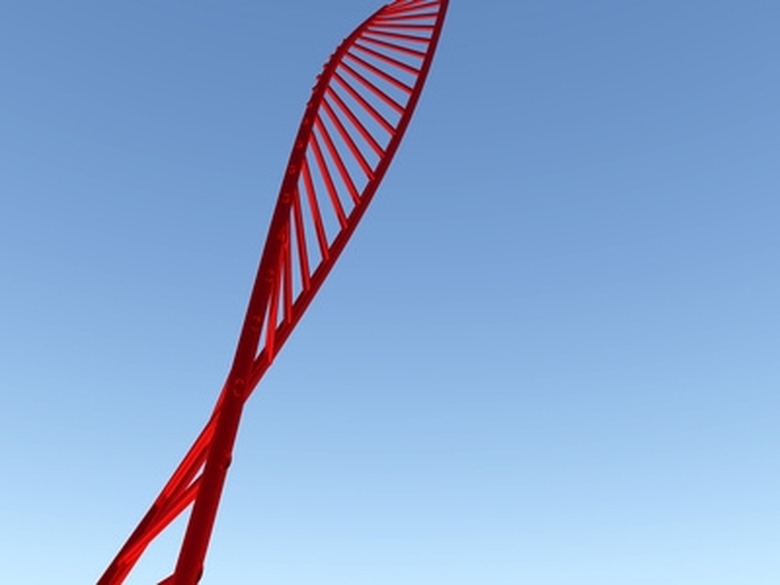How Are Restriction Enzymes Used In Biotechnology?
The biotechnology industry employs restriction enzymes to map DNA as well as cut and splice it for use in genetic engineering. Found in bacteria, a restriction enzyme recognizes and attaches to a particular DNA sequence, and then severs the backbones of the double helix. The uneven or "sticky" ends that result from the cut are rejoined by the ligase enzyme, reports the Dolan DNA Learning Center. Restriction enzymes have led to significant progress in biotechnology.
Early History
Early History
According to Access Excellence, scientists Werner Arbor and Stewart Linn identified two enzymes that prevented the growth of viruses in E. coli bacteria in the 1960s. They discovered that one of the enzymes, called a "restriction nuclease," cut DNA at diverse points along the length of the DNA strand. However, this enzyme severed the molecule at random places. Biotechnologists were in need of a tool that could cut DNA at targeted sites in a consistent way.
Breakthrough Discovery
Breakthrough Discovery
In 1968, H.O. Smith, K.W. Wilcox and T.J. Kelley isolated the first restriction enzyme, the HindII, that repeatedly sliced DNA molecules at a specific location—the center of the sequence—at Johns Hopkins University. More than 900 restriction enzymes have been identified from among 230 strains of bacteria since that time, according to Access Excellence.
Mapping DNA
Mapping DNA
DNA genomes can be mapped through the use of restriction enzymes, according to the Medicine Encyclopedia. By ascertaining the order of restriction enzyme points in the genome—that is, the locations where the enzyme will attach itself—scientists can analyze the DNA. This technique, known as Restriction Fragment Length Polymorphism, can be helpful in DNA typing, particularly when the identity of a DNA fragment from a crime scene needs to be verified.
Generating Recombinant DNA
Generating Recombinant DNA
The use of restriction enzymes is critical in the generation of recombinant DNA, which is the knitting together of DNA fragments from two unrelated organisms. In most cases, a plasmid (bacterial DNA) is combined with a gene from a second organism. During the process, restriction enzymes will digest or cut the DNA from both the bacteria and the other organism, resulting in DNA fragments with compatible ends, reports the Medicine Encyclopedia. These ends are then pasted together through the use of another enzyme or ligase.
Types of Restriction Enzymes
Types of Restriction Enzymes
According to the University of Strathclyde in Glasgow, there are three main types of restriction enzymes. Type I distinguishes a particular sequence along the DNA molecule but severs only one strand of the double helix. As well, it emits nucleotides at the site of the cut. Another enzyme must follow up to cut the second strand of DNA. Type II recognizes a particular sequence and slices both strands of DNA close to or within the targeted site. Type III will cut the two strands of DNA at a predetermined distance from the recognition site.
Cite This Article
MLA
Tang, Kay. "How Are Restriction Enzymes Used In Biotechnology?" sciencing.com, https://www.sciencing.com/restriction-enzymes-used-biotechnology-6408097/. 24 April 2017.
APA
Tang, Kay. (2017, April 24). How Are Restriction Enzymes Used In Biotechnology?. sciencing.com. Retrieved from https://www.sciencing.com/restriction-enzymes-used-biotechnology-6408097/
Chicago
Tang, Kay. How Are Restriction Enzymes Used In Biotechnology? last modified August 30, 2022. https://www.sciencing.com/restriction-enzymes-used-biotechnology-6408097/
